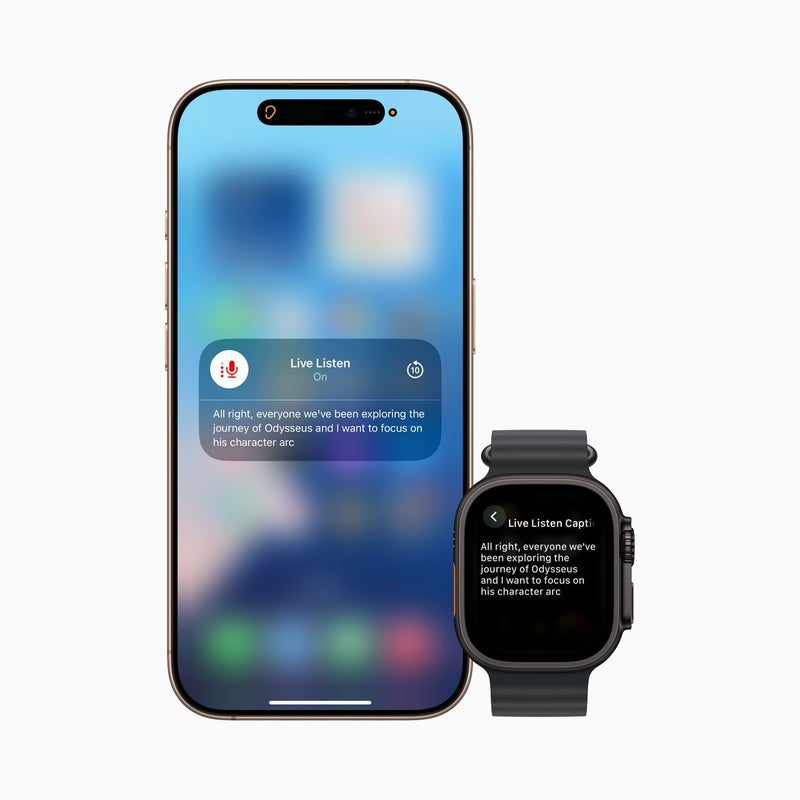Jump to:
Accessibility Nutrition Labels on the App Store

The App Store gets Accessibility Nutrition Labels, making it easier for users to see which accessibility features an app or game supports before downloading it. | Image credit — Apple
Apple introduced Accessibility Nutrition Labels on App Store product pages. These labels will give users clear information about what assistive features an app supports.
A new Braille Access
Apple is also launching Braille Access, which is a unified and powerful tool set for braille users on iPhone, iPad, Mac, and Apple Vision Pro.
Arguably the most standout feature is the integration of Live Captions directly into Braille displays, allowing real-time conversation transcription in braille.
Accessibility Reader: Apple’s new systemwide reading mode

Accessibility Reader is a new systemwide reading mode across iPhone, iPad, Mac, and Vision Pro that lets users customize text appearance. | Image credit — Apple
Designed for users who have dyslexia, low vision, or cognitive disabilities, Accessibility Reader transforms the way text is displayed on Apple devices. It is available on iPhone, iPad, Mac, and Vision Pro, and it lets you customize font style, color, spacing, and more.It also supports Spoken Content, and can be launched from anywhere — including from the Magnifier app, enabling interaction with physical text like books or menus.
Share Accessibility Settings: Use your settings on someone else’s device
Apple introduced Share Accessibility Settings, a new feature that lets users temporarily apply their personalized accessibility settings — like VoiceOver, Zoom, or larger text — on another Apple device.
Live Listen now works with Apple Watch

Live Listen on Apple Watch now includes real-time Live Captions. | Image credit — Apple
Apple is making it easier to follow conversations in real time with Live Listen controls, which are now available on Apple Watch.
With Live listen, you can pause, resume, or scroll through recent transcripts with an Apple Watch.
Apple Vision Pro gains hands-free accessibility

Zoom on Apple Vision Pro now lets users magnify real-world content through the main camera. | Image credit — Apple
visionOS is getting major upgrades to help users navigate the world more independently. With Zoom enhancements, users can magnify their entire view through the Vision Pro’s main camera.
Meanwhile, Live Recognition can describe surroundings, read text, and identify people or objects. Apple is also opening up the camera to approved apps like Be My Eyes, allowing real-time assistance directly within the headset.
Magnifier Comes to Mac

Magnifier is a key accessibility tool on iPhones and iPads, and it is now coming to macOS too. The new Magnifier app for Mac uses a connected camera — including the iPhone’s via Continuity Camera — to zoom in on documents, whiteboards, and objects in the real world.It’s customizable too, allowing users to adjust brightness, contrast, color filters, and to capture views for later reference. When paired with the new Accessibility Reader, Magnifier can help users with low vision interact with both physical and digital text.
More updates across the board
Here are some of the other standout additions:
- Background Sounds now include EQ settings and new automation options in Shortcuts.
- Personal Voice can now be created in under a minute using just 10 phrases — and it supports Spanish (Mexico).
- Vehicle Motion Cues are coming to Mac, helping reduce motion sickness while in transit.
- Eye Tracking and Head Tracking get more powerful, letting users control iPhones and iPads with simple movements or dwell gestures.
- A new protocol is coming for Brain-Computer Interfaces, expanding support for users with severe mobility impairments.
- Assistive Access now supports simplified media playback on Apple TV.
- Music Haptics become more customizable, allowing users to feel vocals or full songs through iPhone vibrations.
- Name Recognition debuts in Sound Recognition, letting users who are hard of hearing know when someone is calling their name.
- Voice Control adds a new programming mode in Xcode and expands to more languages, including Korean, Arabic (Saudi Arabia), Turkish, and more.
- CarPlay gains support for Large Text and additional sound notifications like crying babies and sirens.
Aleksandar is a tech enthusiast with a broad range of interests, from smartphones to space exploration. His curiosity extends to hands-on DIY experiments with his gadgets, and he enjoys switching between different brands to experience the latest innovations. Prior to joining PhoneArena, Aleksandar worked on the Google Art Project, digitizing valuable artworks and gaining diverse perspectives on technology. When he’s not immersed in tech, Aleksandar is an outdoorsman who enjoys mountain hikes, wildlife photography, and nature conservation. His interests also extend to martial arts, running, and snowboarding, reflecting his dynamic approach to life and technology.
Read the latest from Aleksandar Anastasov
















